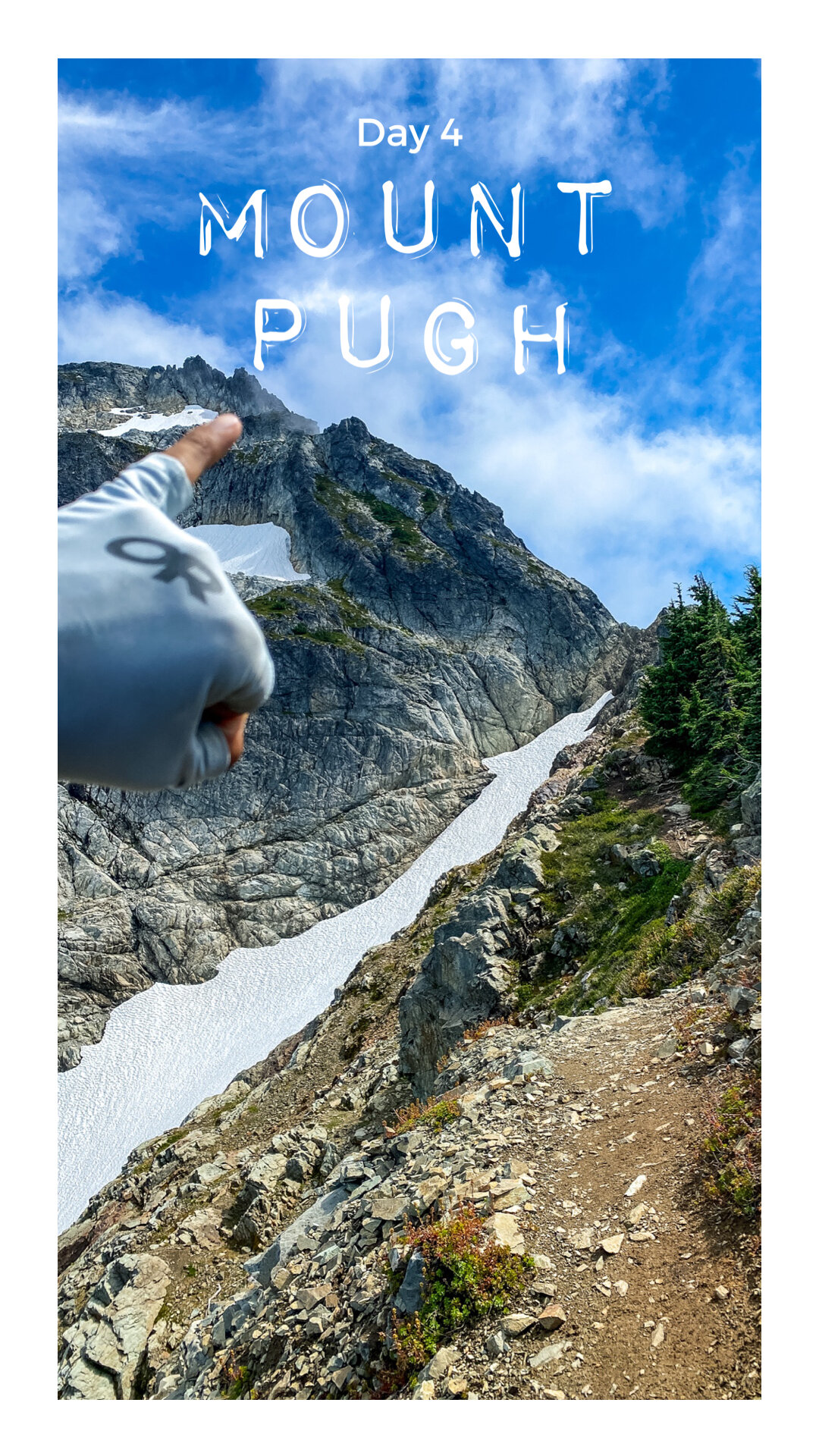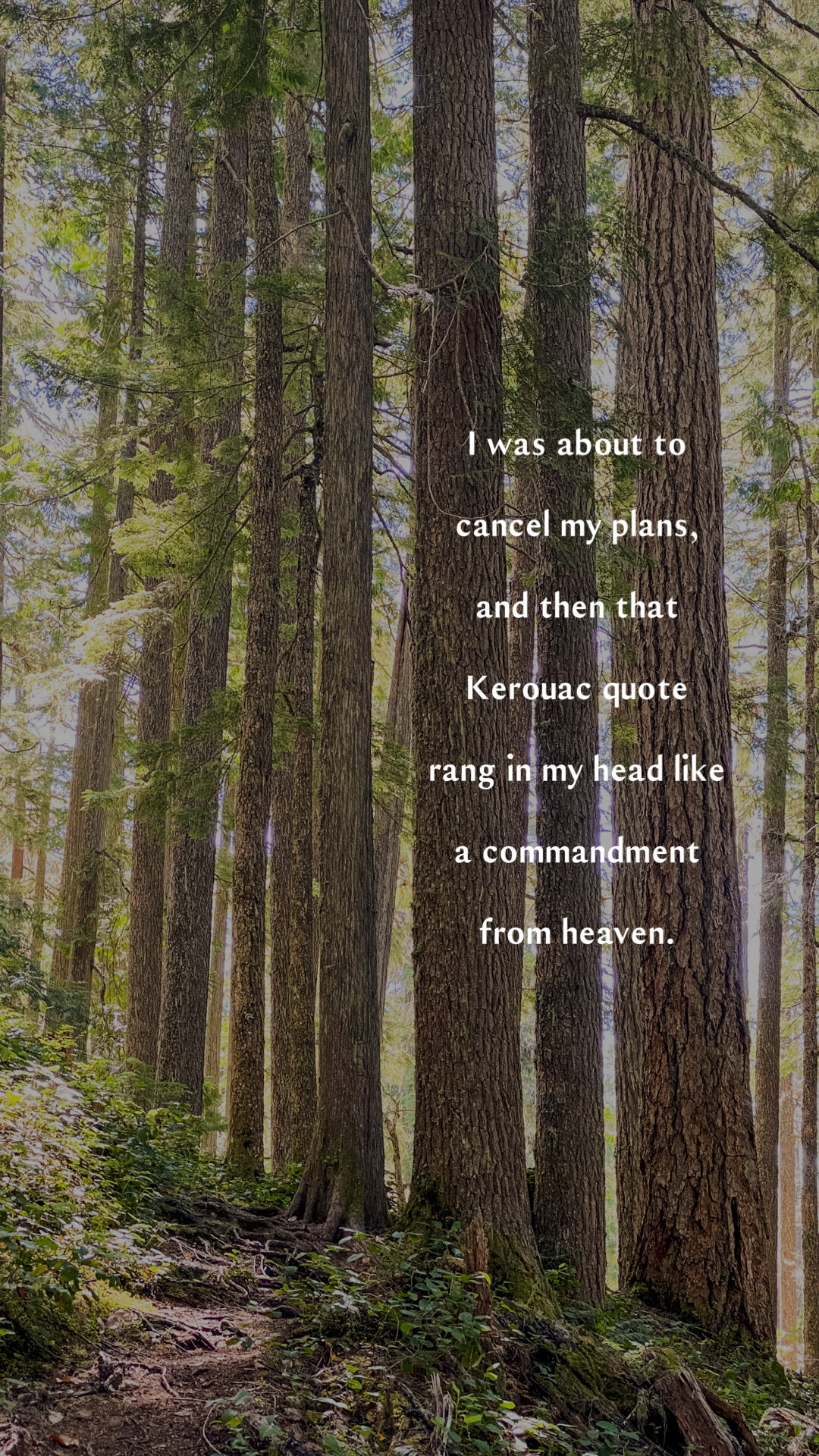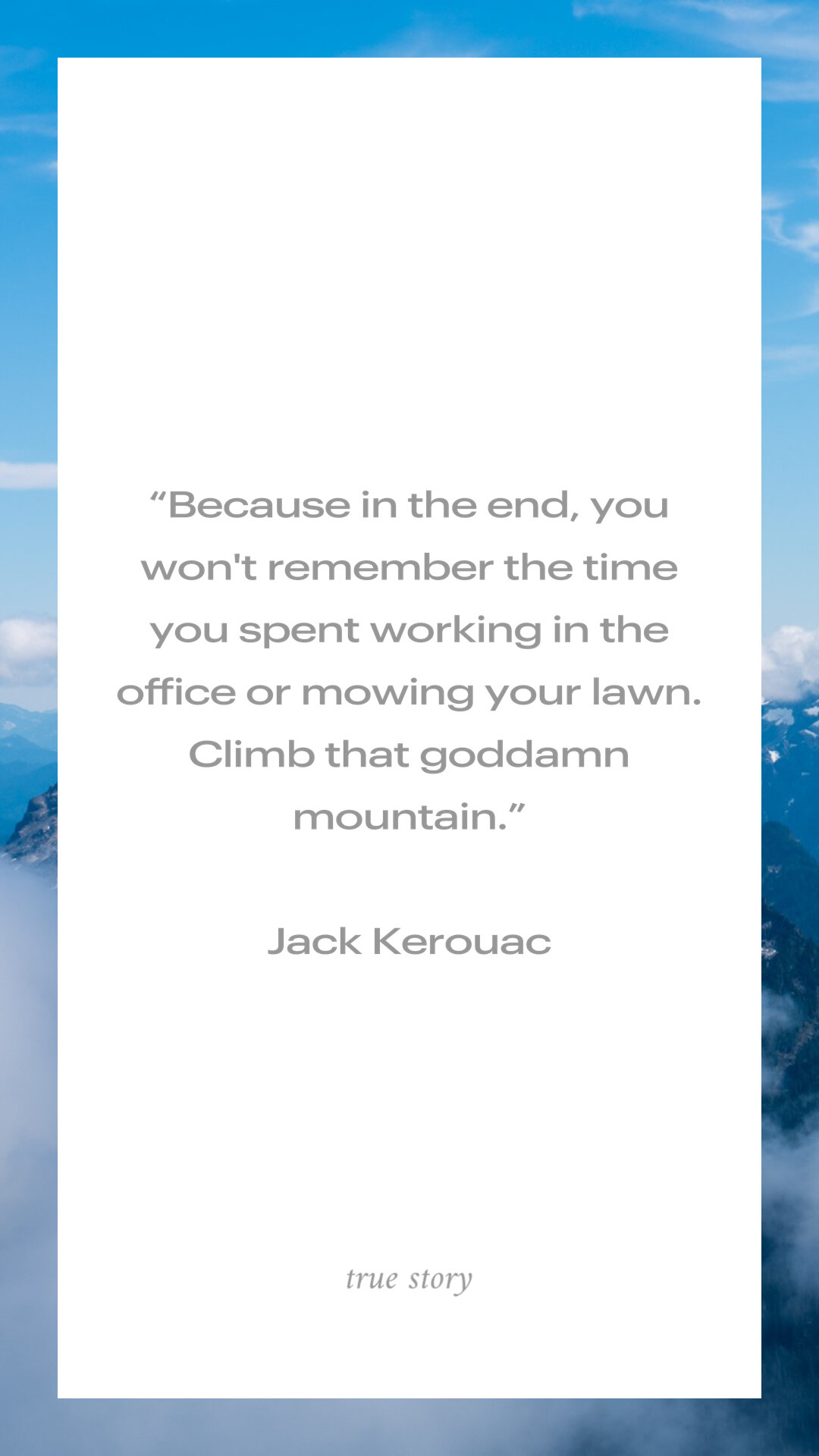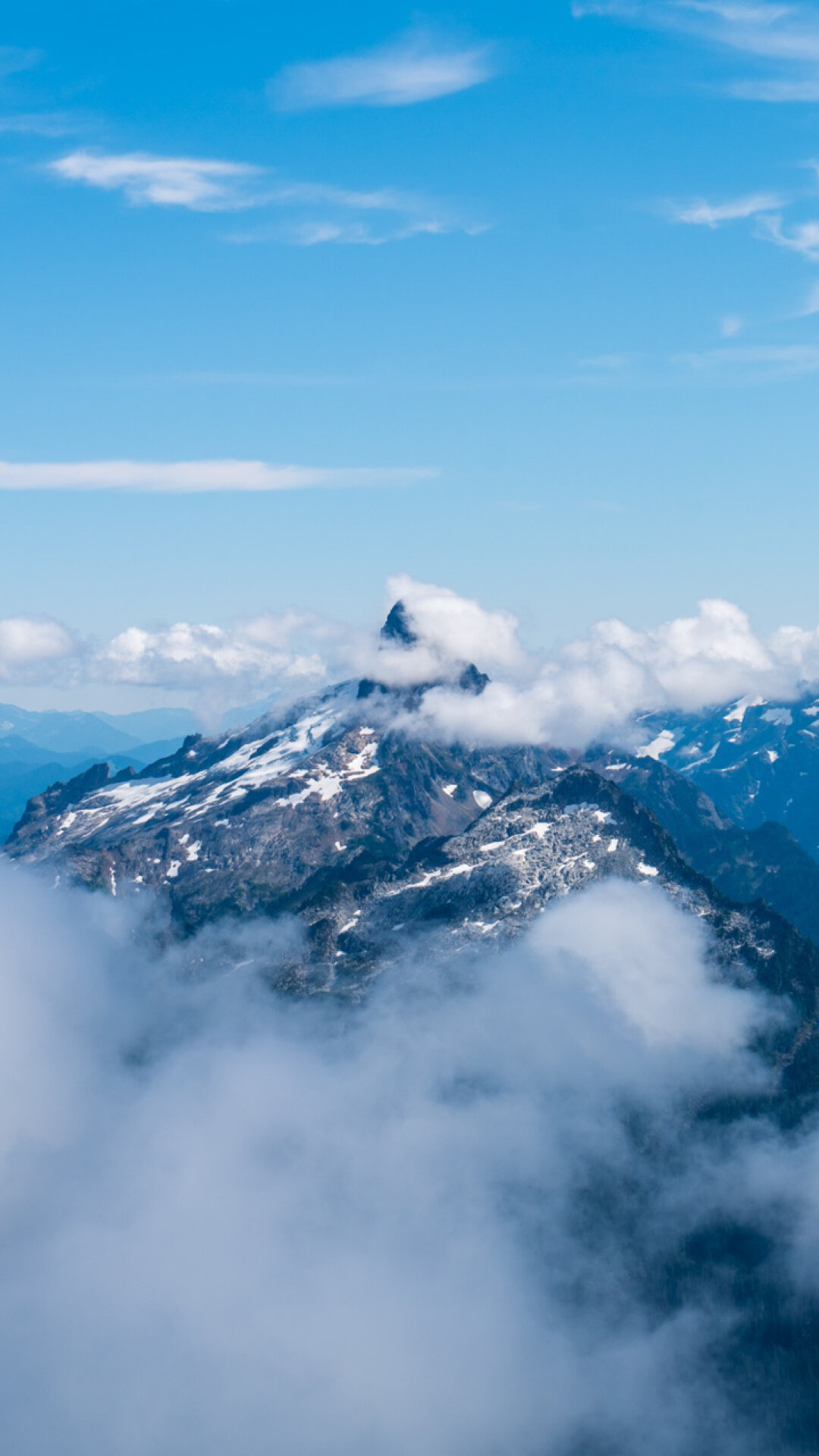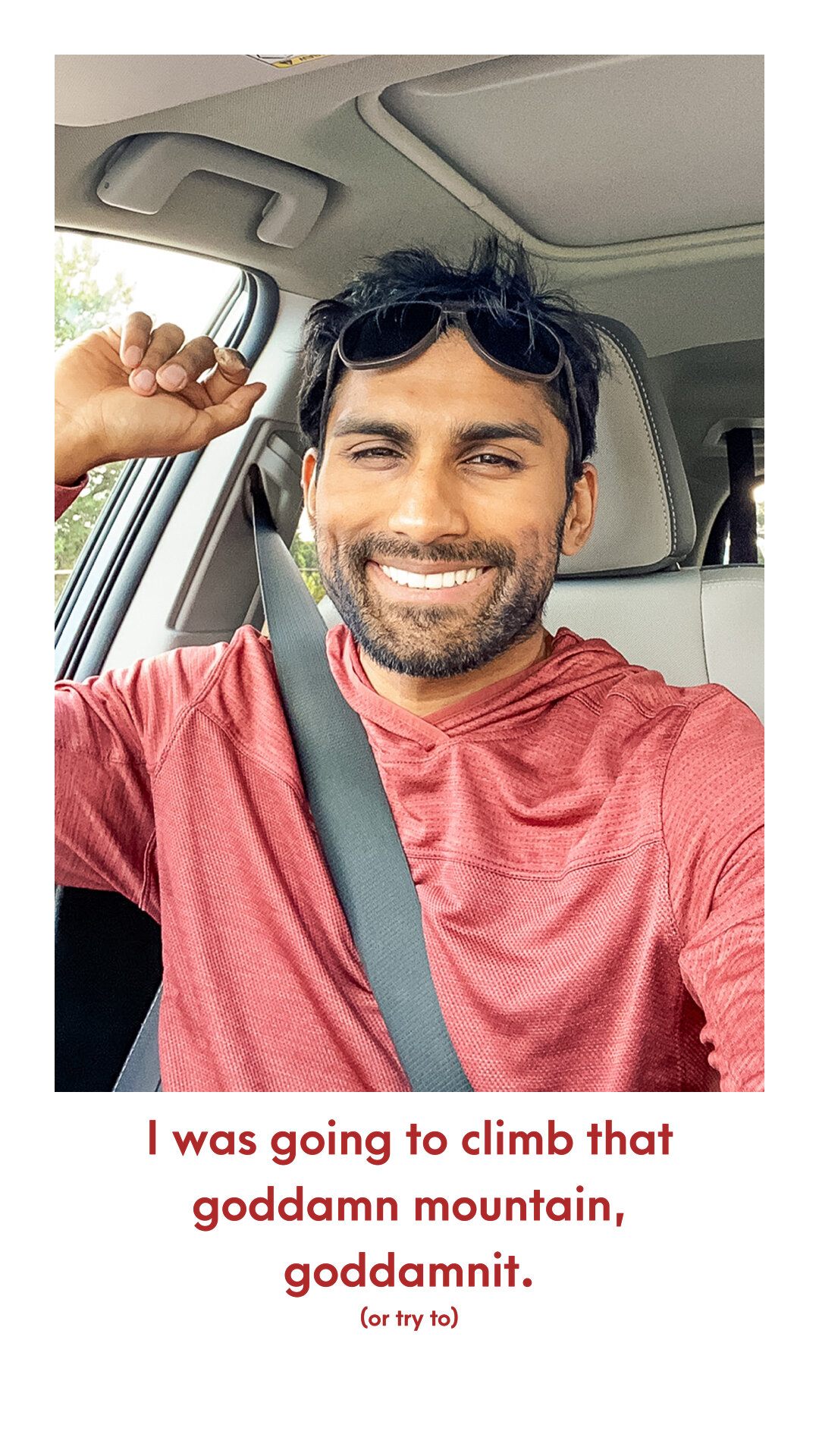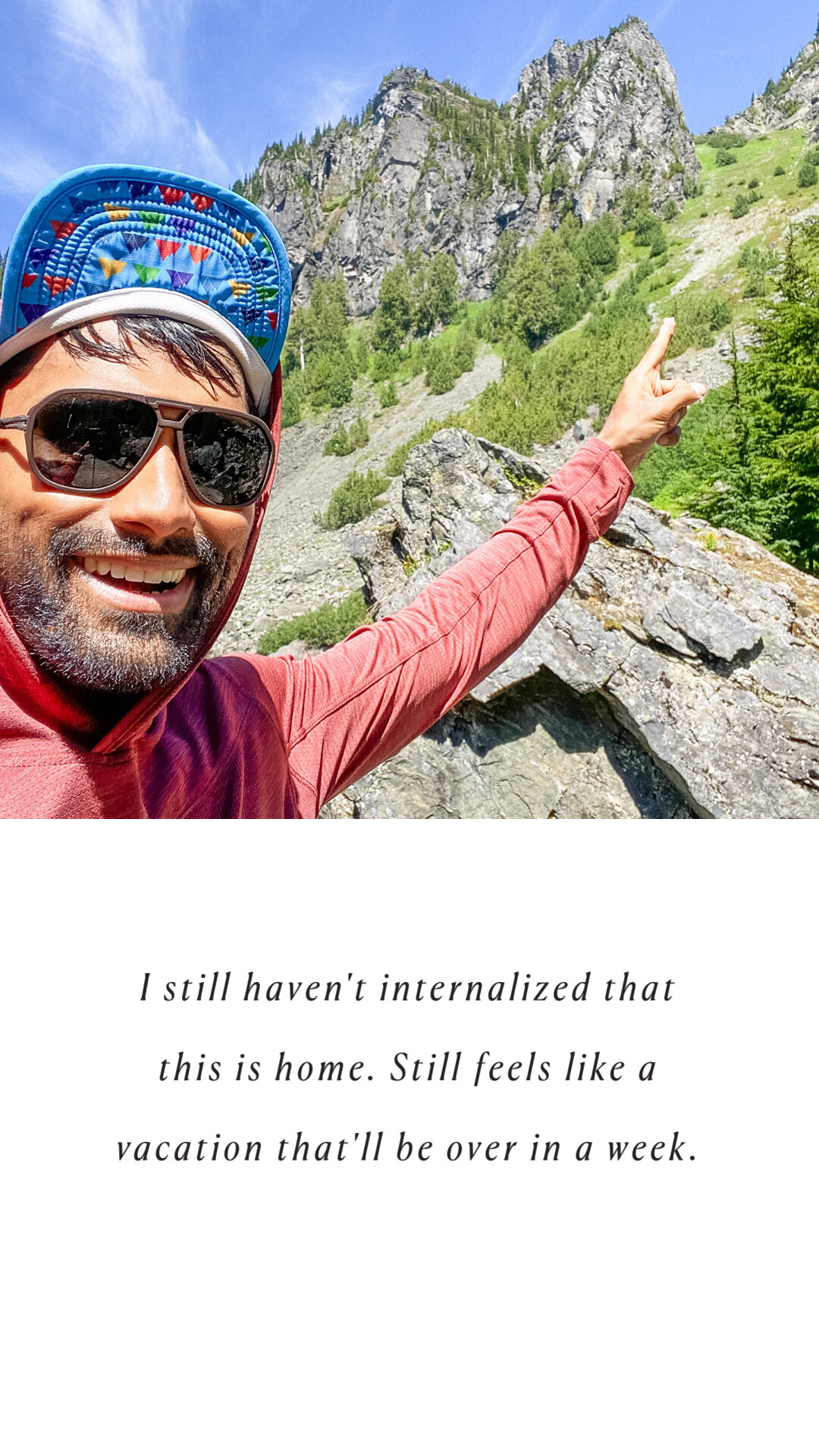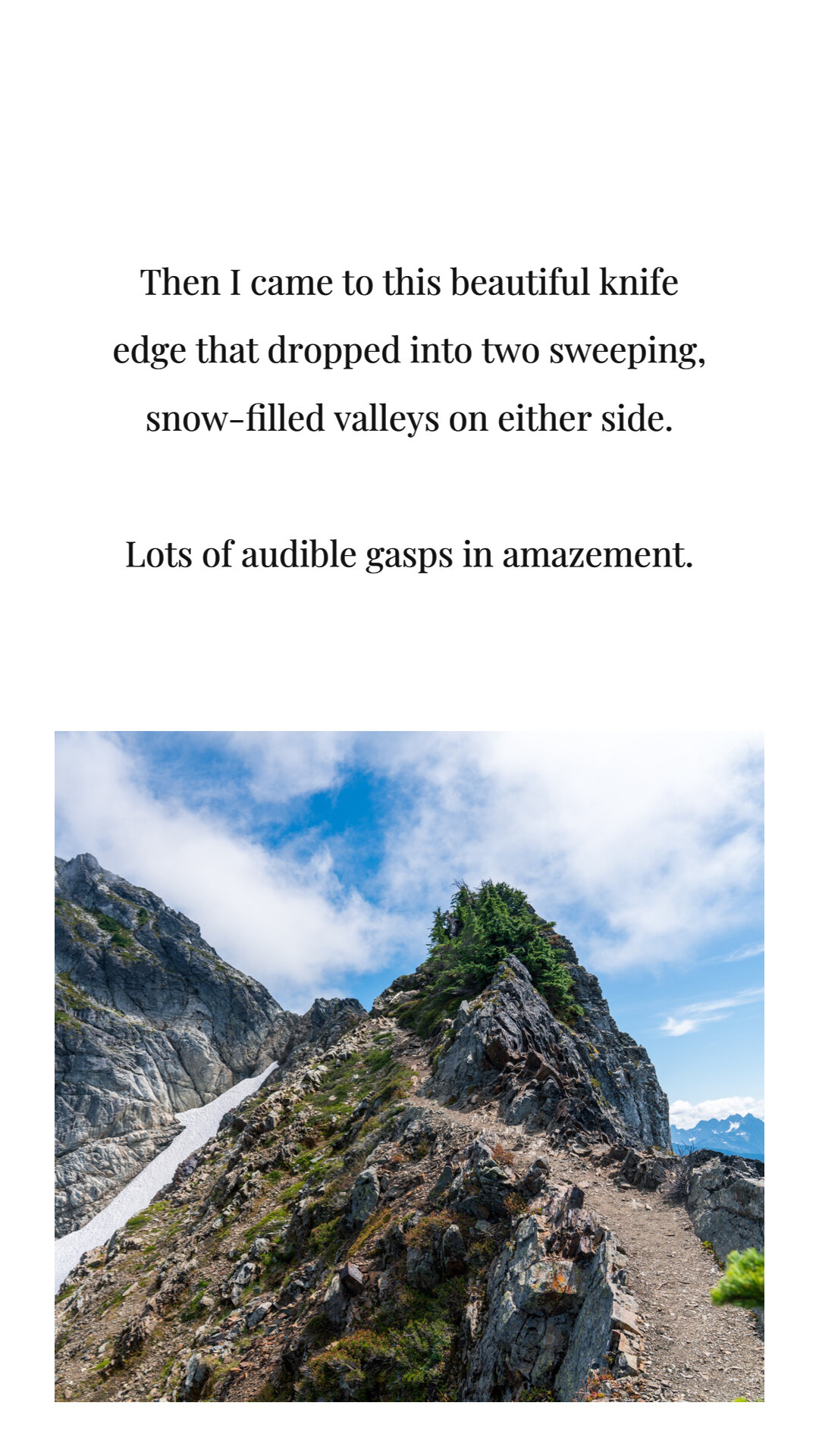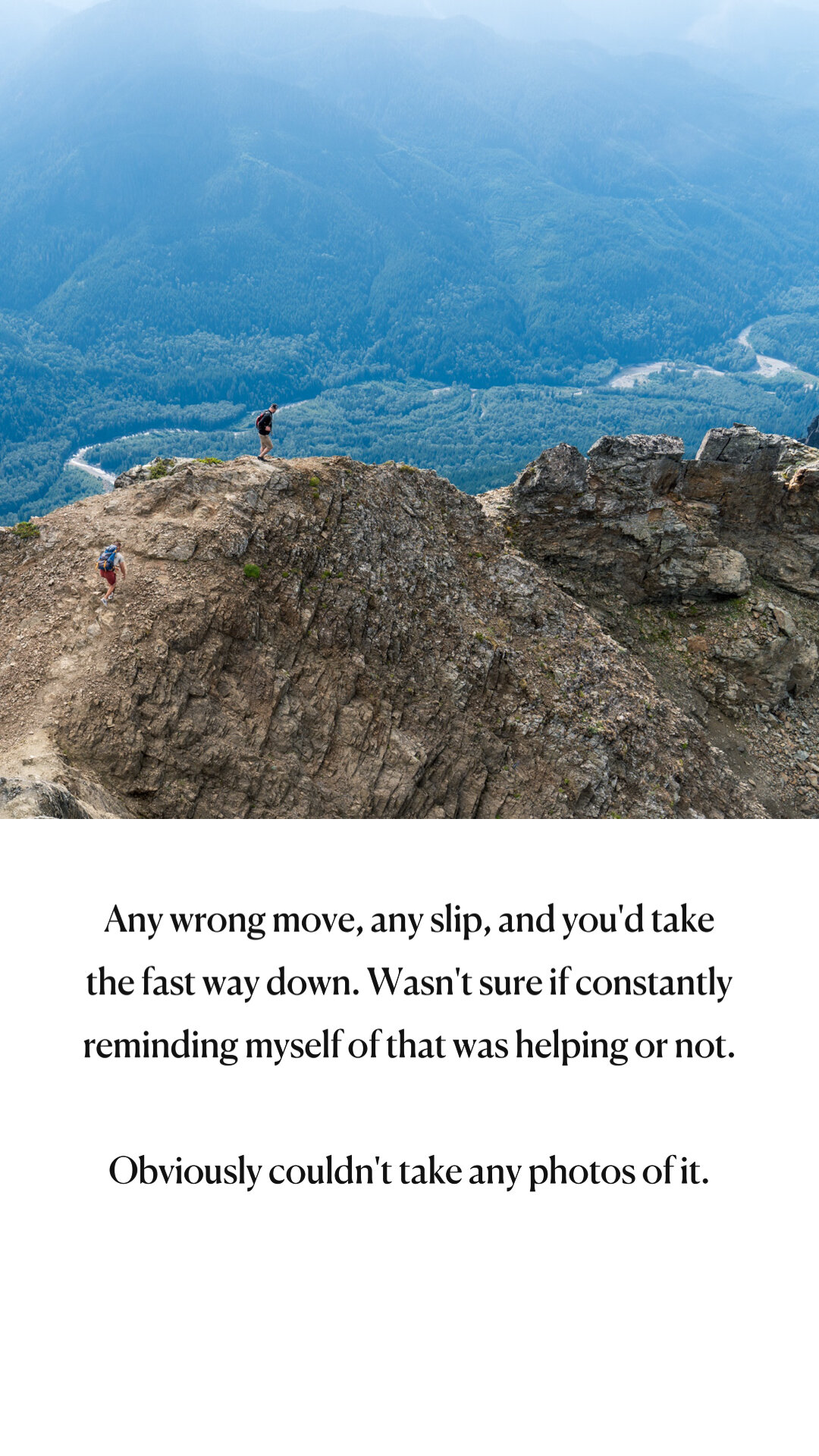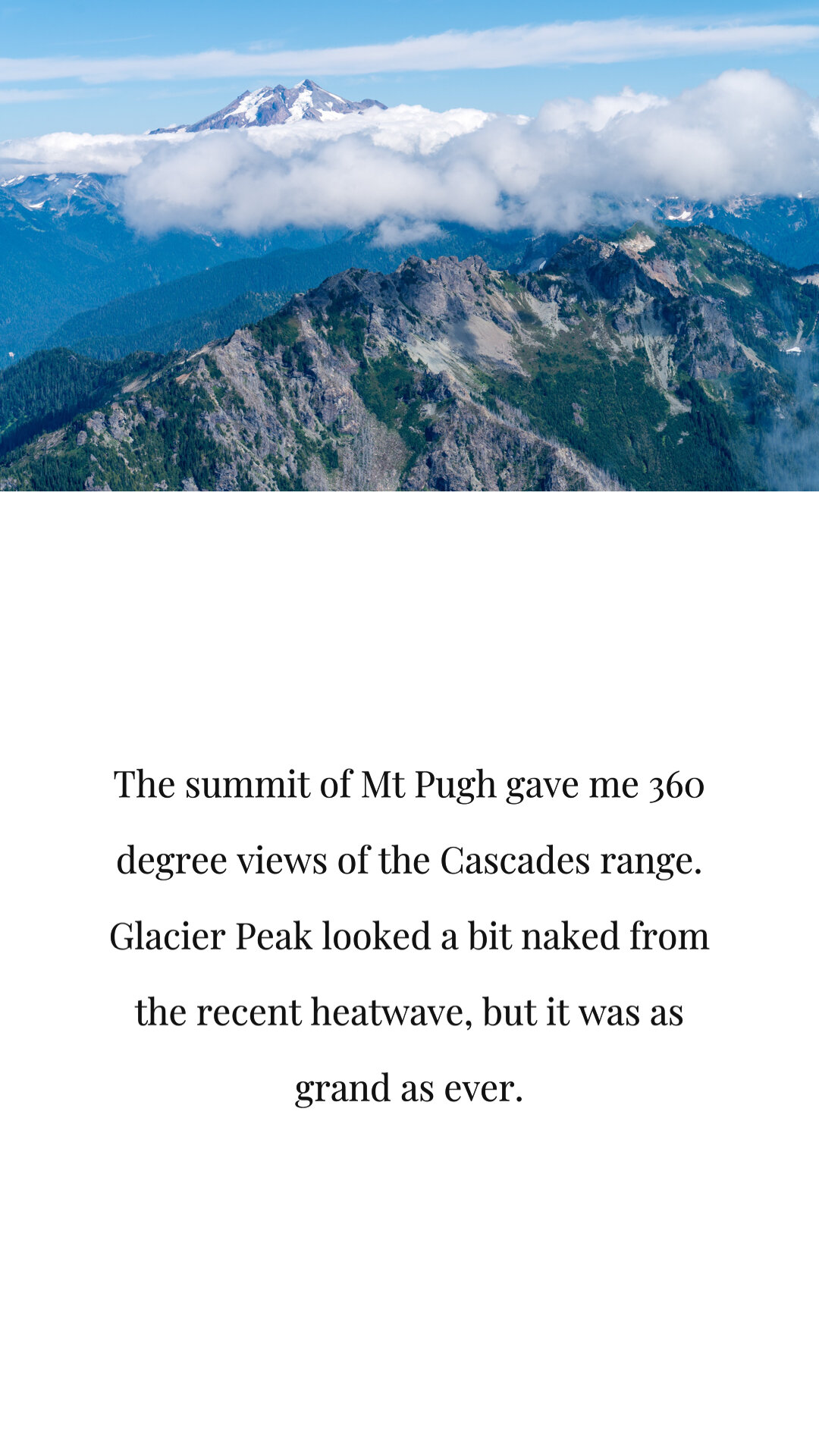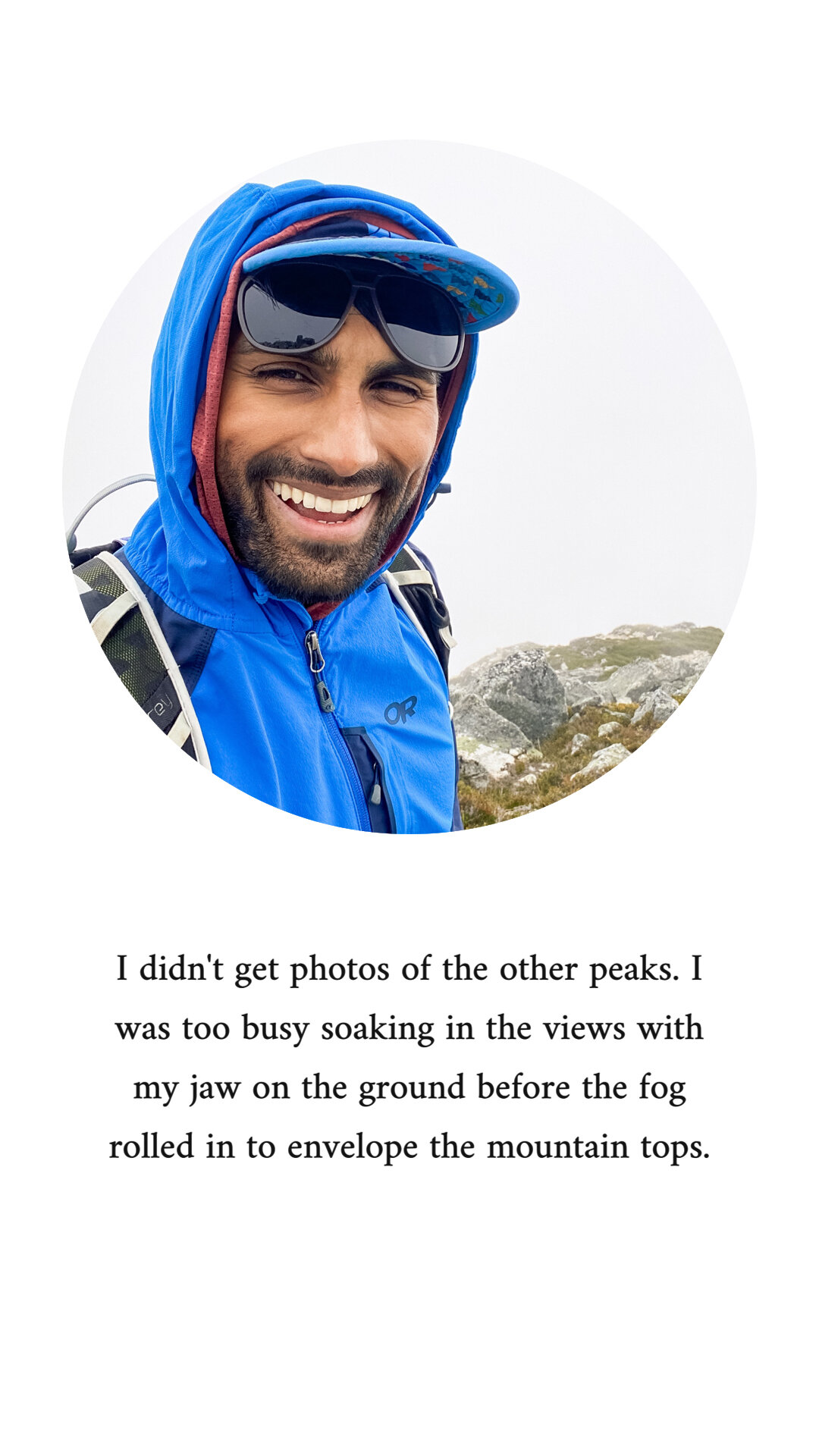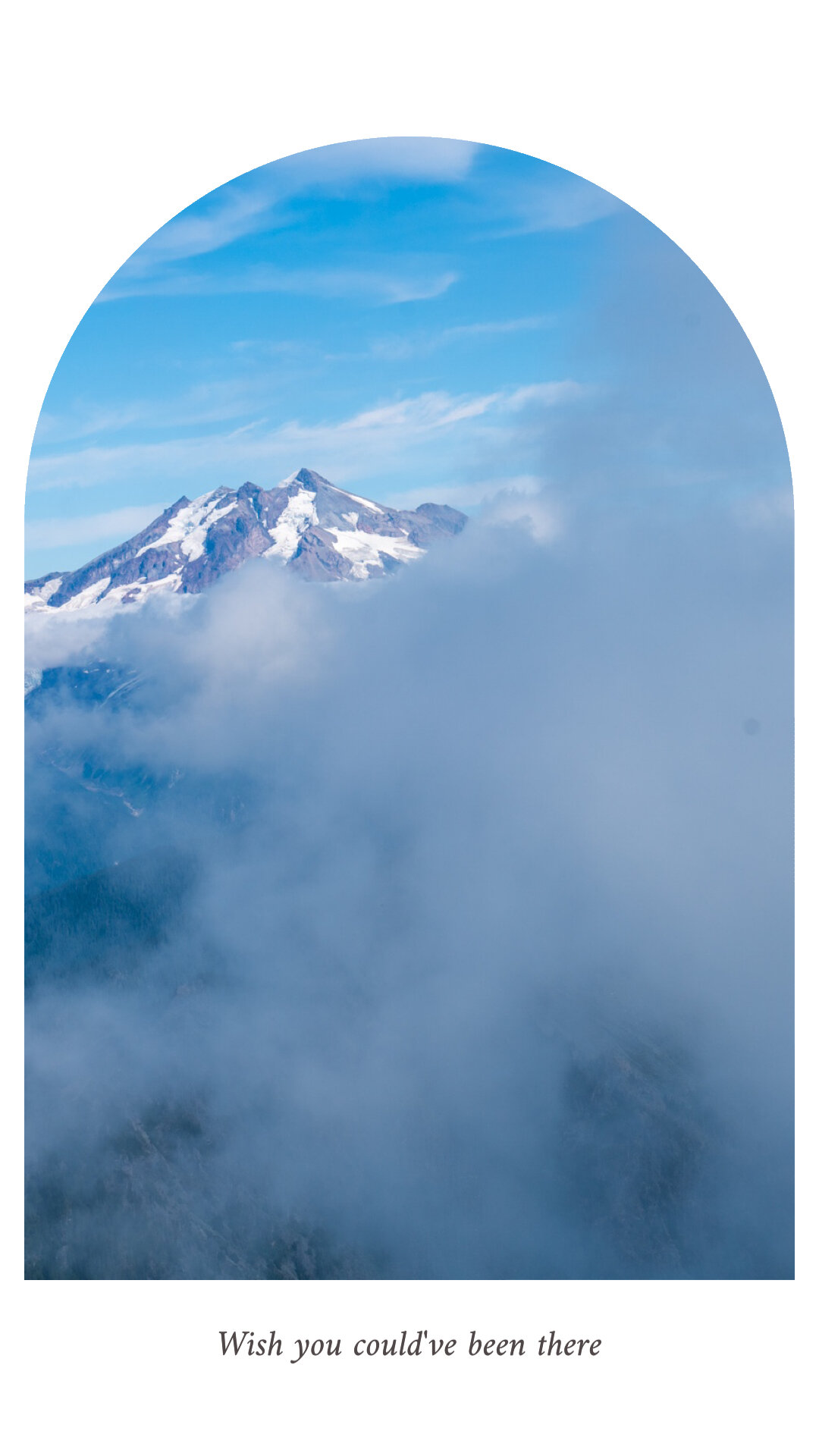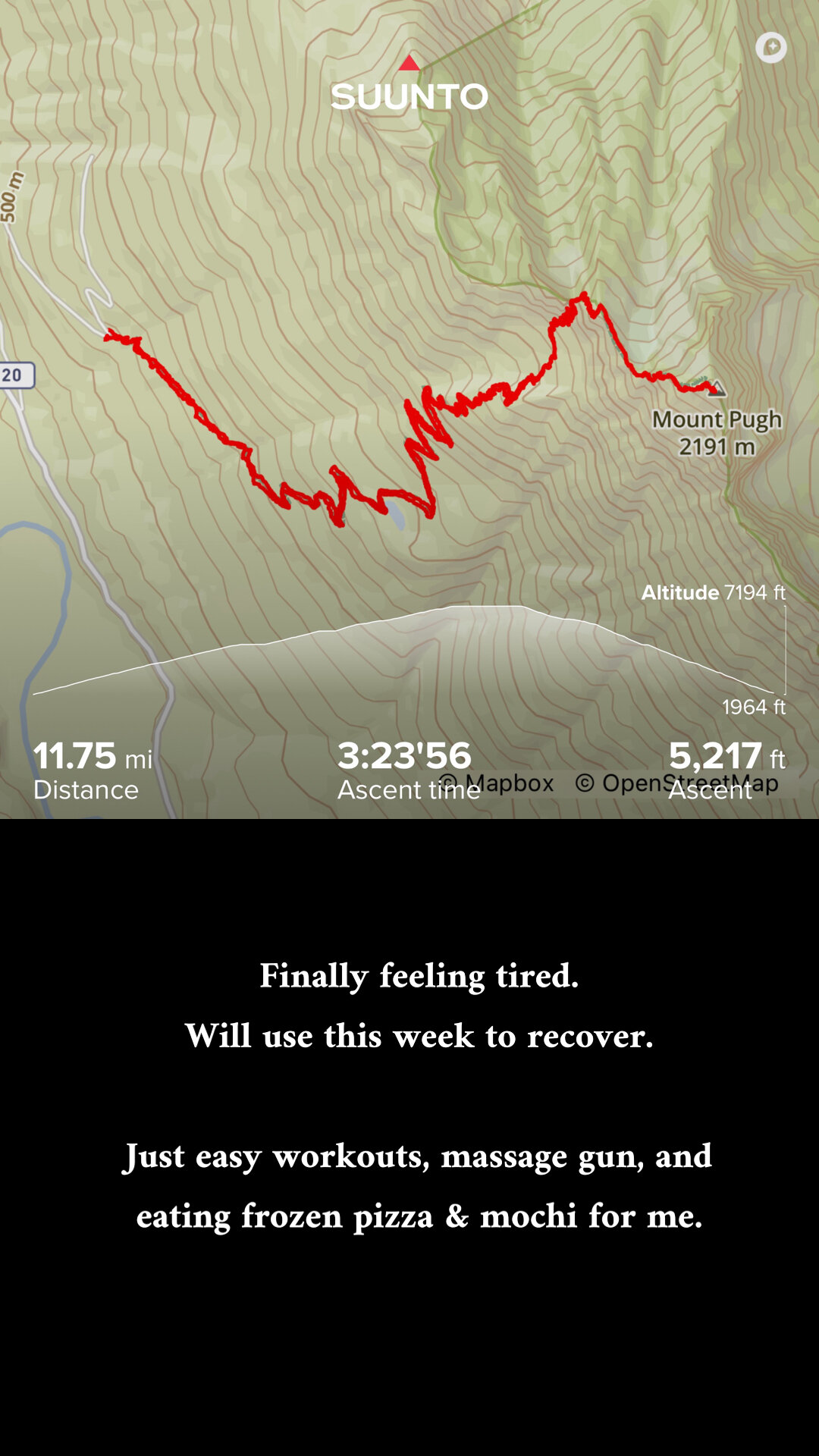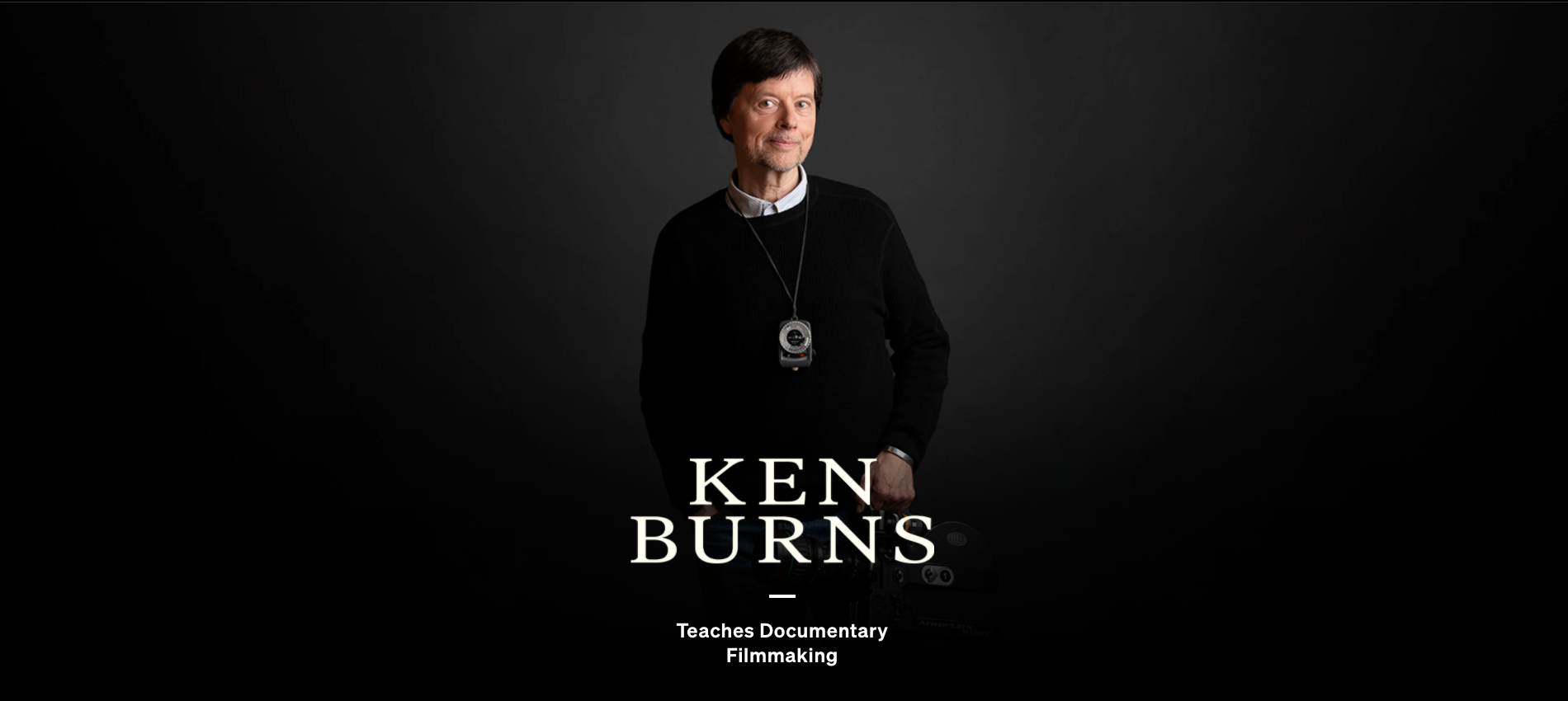UPDATE: here’s an end-of-year look back at 2022.
This’ll be my first full year of living in the Pacific Northwest, the closest I’ve ever been to big mountains. For the past few years, I’ve been daydreaming about all the activities I’d finally be able to immerse myself in once I moved out West. I always felt like I was playing catch-up, having grown up in a family that couldn’t afford to expose me to the great outdoors.
Comparing myself to others is not a healthy thing to do generally, but it helped me to dream big and do more than I would have otherwise. It all just pushed me to plan more thoughtfully, train harder, and be more intentional about where I place my energy.
In order to do everything on my wish list, I’d have to quit my job and live at least two lifetimes. I’ve used this framework of effort vs interest to help narrow down what it is I’d arrange logistics for, train for, and ultimately prioritize. The exercise of doing this helps me be realistic about what I can and can’t do in a given year. I’ve talked about this with friends and figured it’d be easiest to share a visual. Usually this happens on a piece of scrap paper that I scribble on for weeks. It also changes throughout the year based on any injuries, environmental factors, life circumstances, and new inspiration. Hopefully you get some ideas from this. If any are on your own list, do let me know!
Skiing
I didn’t have a ski season last year because of the pandemic, so I regressed a bit in my skills. Much of this year is just playing catch-up aggressively so that I could feel confident doing some touring.
AIARE 1 Avalanche + Rescue training - The larger goal here is to get out into the backcountry and earn my turns by skinning up the mountain. Before I can do that, I need to learn how to read snow conditions for avalanche risk. Accomplishing this is a matter of signing up for a course. At this point, it’s most likely that I’ll book it for the winter of 2023.
300,000 feet of resort skiing - The purpose of this goal is to feel more comfortable on skis by putting in lots of reps. To avoid practicing bad habits, I’ve committed to three ski lessons to correct my form. So far I’m at 27,000 feet of descent from two and a half days of skiing without trying too hard. This is a stretch goal, but pretty do-able if I take advantage of the night skiing at Stevens Pass.
Surfing
This is pretty low on the interest axis, but it’s on there. Leah’s trying to get more into surfing and I’ve been reluctant given my aversion to being wet and thrashed around. I see this as a way to spend more time doing something she loves. The main goal here is to be good enough to enjoy doing it. The water won’t start warming up til May around here, so I’ll probably have to get used to a thick wetsuit.
Surfing in Westport, WA - The closest decent destination for surfing in Seattle is just below the Olympic Peninsula in Westport. It’s about 3hrs away from Seattle, so it’s too far to make a day trip out of it so we’ll make a weekend of it.
Surfing at Short Sand Beach, OR - On our drive along the Oregon coast we stopped by to check it out. It looked like a beginner surfer’s paradise: smooth sand, sheltered cove, and a short hike through a magical PNW forest.
Cycling (road & gravel)
I have a lot of cycling goals, but it’s not because it’s the activity I enjoy the most. Every time I’m on my bike, I am mildly annoyed because I wish I was spending time climbing instead (true story). Still, I get excited looking at a map and drawing an ambitious line through a place I’ve never been to. Cycling also is something I can do on my own without much advanced planning. The endurance I built up from my low HR runs also means that I can cover a lot of mileage without breaking a sweat on two wheels.
Car-free Mt Rainier Sunrise Road (30+ mi, 3k ft ele) - Sunrise, nestled on the east side of Mt Rainier, is the highest point you can drive to in Mt Rainier National Park at 6,400ft in elevation. It’s also the last road to get plowed and open to cars. While the plows are still making progress, it’s possible to bike up for face-to-face views with the mountain without not have to worry about sticking to a shoulder lane. The trick is to time it so you ride it as late as possible, when it’s warmest and the most amount of road is accessible, but before cars are allowed through. This usually happens late-June or early-July depending on snowfall that winter. I’ve set a reminder on my calendar to check road conditions every few days. More info.
Car-free Highway 20 cycling (50+ mi, 6k ft ele) - Highway 20 is the iconic road that cuts through the Northern Cascades. I’ve done some climbing there and never appreciated how special the scenery was until I moved to Washington. I just assumed the entire state looked like this. The road is popular with cyclists all-year round but there’s a sweet spot in the year when it’s plowed but not yet open to cars. This usually happens between late-April to early-May. Depending on how much is plowed, this can be a 30mi ride or a 100mi out and back. I’ll be checking WSDOT pretty regularly. More info.
Mt Adams gravel cycling loop (50mi, 4k ft ele) - I only got into cycling two years ago, but I was most excited about gravel riding. The views, solitude from cars, and adventure aspect all appealed to me. This is a route that’s at the foothills of Mt Adams. Someone described is as one of the best rides from their summer. I’d probably do this in early July. Route line.
2-day bikepacking Olympic Adventure Trail (66mi, 8k ft ele) - I’ve never bikepacked before, but it doesn’t seem very complicated. Still, I decided to ease into it with this route in Olympic National Park. I initially planned on doing this out and back in a day, but figured it’d be more enjoyable if I took my time even though I’d be carrying overnight gear. Someone recommended doing this in the winter when there are fewer people around, so I’ll want to wait for a streak of dry weather in March to ensure the singletrack isn’t muddy. Route line.
Mt St Helens 2-day bikepacking loop (80mi, 12k ft ele) - The scenery here is notably different from the lush Olympic Nat’l Park. The eruption of Mt St Helens in 1980 left the landscape still recovering, with green ferns dotting the landscape but plenty of open vistas in all directions. Best time to do this would be mid-July to late-September before the first snow falls. Route line.
Seattle triple-ferry bike ride (100+mi, 6k ft ele) - This was something that I saw on Reddit that interested me. It’s a loop around the greater Seattle area that incorporates three ferries. Timing of the riding is pretty important to line up departures so I’d attempt on a long summer day. Route line.
RAMROD: Ride Around Mt Rainier in a Day (150mi, 10k ft ele) - This is a very popular event typically held on the third Thursday of July. There’s a lottery to get in but some tickets are auctioned for several times the face value, with the proceeds going to the National Parks. The scenery is spectacular as you ride with Mt Rainier looming over one shoulder. Getting one of the 800 spots is mostly a matter of luck. I’ve considered attempting it unsupported, but I’d only consider this if I wasn’t alone given how mentally exhausting the mileage sounds. Route line.
Seattle to Portland in a day cycling (200mi, 5k ft ele) - This is an annual event that attracts a massive amount of riders, almost too many from what I’ve read. The route is often done in two days but I’d be keen to try it in a single push. Much of it is flat, so it’s more of a mental challenge to endure the monotony. Much of it isn’t particularly scenic, so it’s low on my interests, but I’d like to do it just because it sounds cool to say I’ve done it. I haven’t registered yet, but it’s scheduled to be held on July 16-17 this year. Route line.
Mountain biking
There are so many fantastic destinations to ride around Seattle, and mountain biking is something Leah and I can easily do on a weekday summer afternoon when it’s still bright outside for hours. I’m still a beginner and need to learn how to make smoother turns without losing speed. Most of these are pretty modest goals but it will take effort. Getting really good at the sport would require a lot more dedicated practice than I’m willing to commit. Mostly, I’m just trying to have fun with this one.
Clean descent of Inside Passage, Tiger Mountain (1.7mi, blue) - If I do this route enough times, I’ll get it dialed and can know when to speed up and when to slow down. Route line.
Clean descent of Olallie (9mi, blue/black) - I haven’t done this route yet, but it looks beautiful. After a long climb, it’s a sweet descent. It’s longer than my other goal, so it’ll require a lot of pedaling up to get it dialed in with repeat laps. Hopefully I can get this done by the end of October, when the Seattle rain typically starts. Route line.
Climbing
Climbing is what inspires me to train and stay in shape. I like to say that all of my other activities exist to make me a more capable climber. Being in the alpine environment on moderate terrain is what I’m most passionate about. The North Cascades is a perfect playground for this. To make most of these happen, I’ll need to train for endurance in the climbing gym and also get myself out there on smaller, less committing routes at Index, Exit 38/32, Frenchman Coulee, and maybe even Beacon Rock along the Columbia River.
Guided climb: 3rd Pillar of Dana (5.10- III, 5 pitch) - For my birthday, Leah gifted me a guided climb with my favorite climber, Peter Croft! I am thinking I’d take advantage of this amazing gift by climbing one of the High Sierra classics in August. I just have to hope wildfire smoke doesn’t ruin my plans. Route beta.
Guided climb: Red Dihedral, Incredible Hulk (5.10b IV, 12 pitch) - While I’m down there, I figure I might as well get guided on another big classic. Hopefully all this movement on big terrain helps me feel more comfortable having longer days on the sharp end. Route beta.
Sport climb Prime Rib (5.9-, 11 pitch) - A 5.9 sport route that goes on for 11 pitches? I couldn’t believe it when I first heard about this route years ago. I would’ve tried this route last summer if not for the wildfires that overwhelmed the Methow Valley. Making this route happen is mostly about picking a quiet day, finding the right partner who can move fast, and starting early on a weekday to avoid crowds. Route beta.
Sport climb Flyboys (5.9, 18 pitch) - Just next door to Prime Rib is Flyboys, which is around the same grade but almost twice as long. If I can pull off Prime Rib with the right partner, I’ll have a better sense of how feasible this objective would be. Route beta.
Trad climb Ragged Edge of Vesper Peak (5.7, 6 pitch) - This is a solid alpine rock route with stunning views and great exposure. It’s exactly the kind of moderate route that sings to me. Unfortunately, I’m not the only one. Just like the other climbs noted earlier, finding the right partner, moving fast, and starting early are key. Route beta.
Trad climb Outer Space (5.9, 6 pitch) - This is one of the most popular crag routes in Washington. The easy access does mean that I’ll be less “out there” if things go south, but it’s also not a grade I’ve ever led on gear (that’d be a 5.8 in Joshua Tree). Fortunately, it’s a crack system that I’d follow, which I love to climb. Route beta.
Mountaineering & scrambling
I spent a total of five weeks guided in the North Cascades, learning to navigate safely through glaciers to reach icy summits. That was several years ago, and the amount of logistics to get onto glaciated terrain when I lived in NYC meant that it wasn’t something I practiced often. The skills I had have eroded away, so I’d like to rebuild and I’m living in the perfect place for it these days. Fortunately, my fitness is dramatically better than it was years ago and I’ve become more capable in other ways (e.g., I got my Wilderness First Responder certification).
Mt Adams South Spur, snow scramble (14mi, 7k ft ele) - This is basically an intermediary goal to get me comfortable again with my crampons and ice axe. It’s the easiest route up to the summit of Mt Adams and used to be climbed by mules back in the day. You can even bring your dog up. The more snow there is, the easier the route becomes, so it’s likely I’d attempt this in late April or early May (buying a $10-15 pass is required after May 1); I’d most likely want to attempt this in one big day to keep it fast and light (and also not have to carry my poop out). Route beta.
Ruth Mtn Glacier climb (12mi, 4k ft ele) - This is another easy objective that would provide spectacular views of Mt Shuksan and Nooksack Tower. The additional skill to incorporate here is roping up for glacier travel. Best time to attempt is anywhere from June til October, but I’d likely aim for June. I’d definitely want to try doing this in a single day. Route beta.
Eldorado Peak glacier climb (10mi, 7k feet ele) - This is a summit I’ve stood on twice, both times under the supervision of a guide monitoring my decision-making. It’s a big day to reach base camp, and a rather short and straightforward ascent to the summit. It’ll involve roping up for glacier travel and carrying additional gear for overnighting. This would be my third summit on the peak, but I’d like to try it again because of how beautiful the terrain is and also because I’m familiar with it. “…it is in the middle of a collection of beautiful peaks. Massively aloof, perched at the edge of the largest contiguous ice-sheet in the lower 48 states not connected to a volcano, the summit has a Himalayan like splendor owing to its remoteness, position, and knife-edge summit ridge.” Best done between July and September, so I’d most likely I’d aim for late July. Route beta.
Colchuck Peak glacier climb (14mi, 5k feet ele) - This peak sits in the gorgeous Enchantments area of the Alpine Lakes Wilderness. It seems to be easier earlier in the season when snow is covering the talus, but given that I’ve got other objectives in mind already, I’d likely attempt this in early August. The additional skill being challenged here is routefinding on both the ascent and descent. I’d most likely take advantage of long daylight by attempting this in a big day with an early start, but I’m still dependent on a camping permit for Colchuck Lake (~14% success rate). Depending on my comfort level, I may combine this with Dragontail peak. Route beta.
Fisher Chimneys on Mt Shuksan (4th class, 7k ft ele) - This is a route that combines mountaineering with some 4th class scrambling. I’ve been on Mt Shuksan before, but we were rained off of it several hundred yards from the summit. Loose rock is another hazard to be mindful of, especially due to the popularity of the route. If I arrive to the base of the rock portion tired from the hike up, that’s a bad sign. Training my endurance will be important. Most likely I’d attempt this in mid or late August. Route beta.
Backpacking & day-hiking
I lost interest in backpacking and hiking when I was exploring the peaks of New England, but I’ve got a renewed interest for it with the expansive terrain of Washington. I wouldn’t consider myself a trail runner, but I would say that I’m a fast hiker, especially when I’m on my own and can get in a certain headspace.
Thru-hiking Snoqualmie to Stevens Pass in 5 days (75mi, 16k ft ele) - As soon as I saw this line on a map, I was immediately interested. This is considered Section J of the Pacific Crest Trail and there isn’t a single road that you’d come across til you’re finished. Many of the dozen alpine lakes are even swimmable in late summer. Some areas are impassable until the snow fully melts in August, so this likely would be something for late August and would require taking some days off to complete. I’d most likely try this during the days before Labor Day or after, to avoid the holiday crowds. Five days would be the plan if Leah can join me, but I’d attempt it in four days if I was going solo. The hardest part may be arranging transportation for a dropoff and pickup. Route beta.
Enchantments thru-hike in a day (18mi, 5k ft ele) - This is probably the most popular trail in all of Washington state. Most people attempt to spend only a day in the Enchantments because of how hard it is to get a permit (less than 2% success rate). For those who can manage it, a day hike is the best way to do it. Because this is a point to point trail, arranging transportation is likely to be the hardest part. Logistics are made easier if I don’t attempt this alone, but I would love to get lost in my own head out there. Route beta.
Day hike Harts Pass to Rainy Pass (31mi, 4k ft ele) - This is another section of the PCT that I’d be interested in doing. It’s a small section that could be feasible in a day, and seems perfect for late September or early October when the larches are glowing gold. Again, the transportation logistics would be the challenge given it’s a point to point trail. I know of one person who did this trail with another solo hiker traveling in the opposite direction. When they crossed paths, they traded car keys. Route beta.
Mt Rainier Wonderland trail in 3 days (93mi, 22k ft ele) - The Wonderland trail is a giant loop around Mt Raininer, with broad meadows of wildflowers, waterfalls, and inspiring views of the mountain over your shoulder. This is by far the most intimidating goal on the entire list, even though it’s probably safer than any of my climbing objectives. What gives me chills is the rigor of hardcore training that would be required to pull this off. Most people do this trail in 7-10 days, but that requires a lot of permitting for campsites per night. The people who do this in 3 days are legit ultra-runners, and usually have support from the outside to make it happen (either friends or paying a company $1500). The best time to do this seems to be August. If for whatever reason this doesn’t go down in 2022, it’ll be a priority goal for 2023. This will happen. Route beta.
All of this is pretty local to where I live, with the exception of going to the High Sierras to climb. One of my priorities for the year was to explore locally as much as possible. There’s so much to do around here that it felt wrong to hop on a plane to recreate. Still I’ll be traveling back to NYC often to visit my family, Massachusetts for Leah’s family, and I’ll be taking my dad out to the Kenai peninsula in Alaska to go fishing for five days as a retirement gift in early July.
Writing this out in more detail than the usual notepad scribbles helped me tremendously. Rather than feel like there’s too much to do, I’ve limited my focus to a few goals that are within reach if I put in the effort (and get lucky with conditions). Even if I accomplish half of this list, it would be an epic year. Although my calendar is looks full, there’s still lots of blank spaces to fill with spontaneity and new inspiration. There’ll certainly need to be other objectives along the way that serve as stepping stones. I’m sure to learn a lot and make new friends along the way. What’s most exciting is how these experiences will set me up for an even more ambitious 2023! And of course, much of this will rely heavily on the support of my loving and beautiful partner in life, Leah.






















